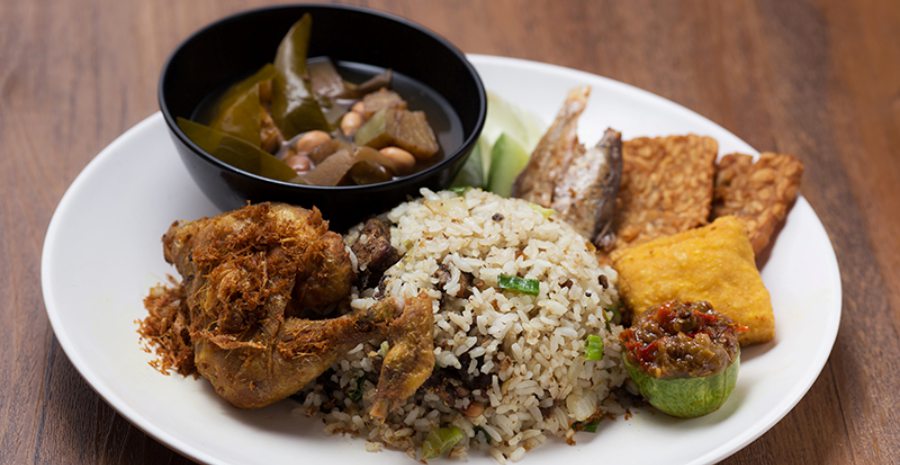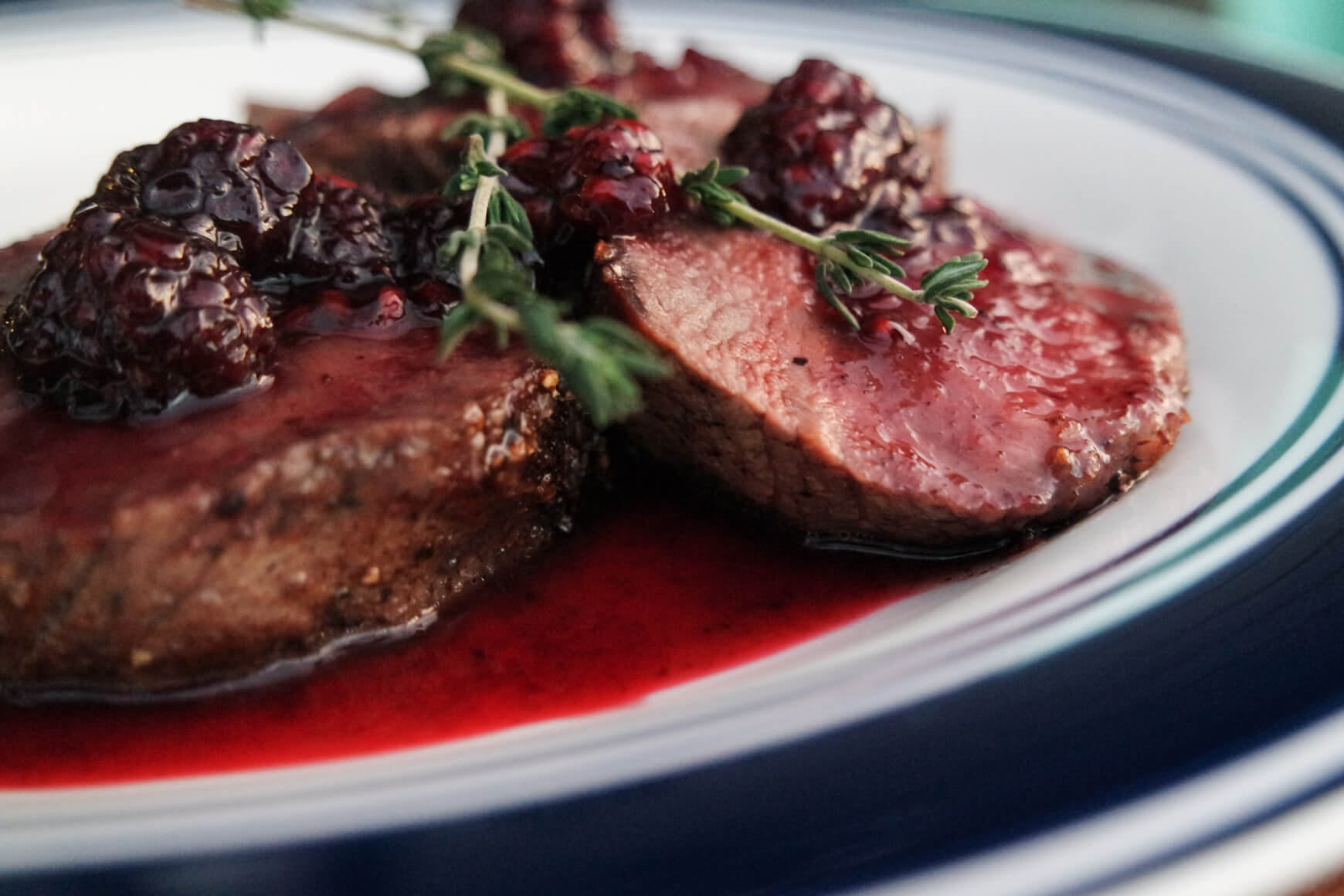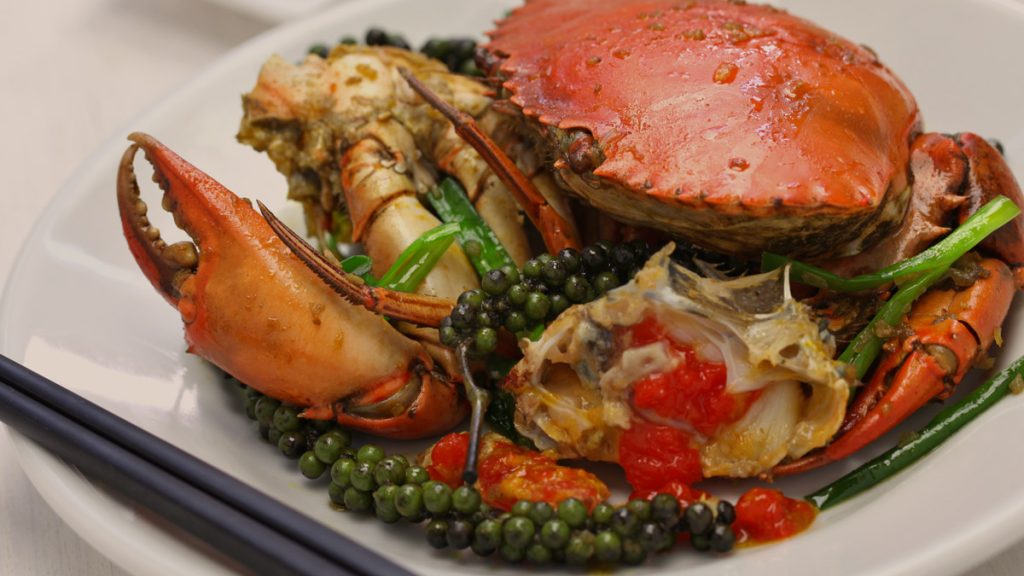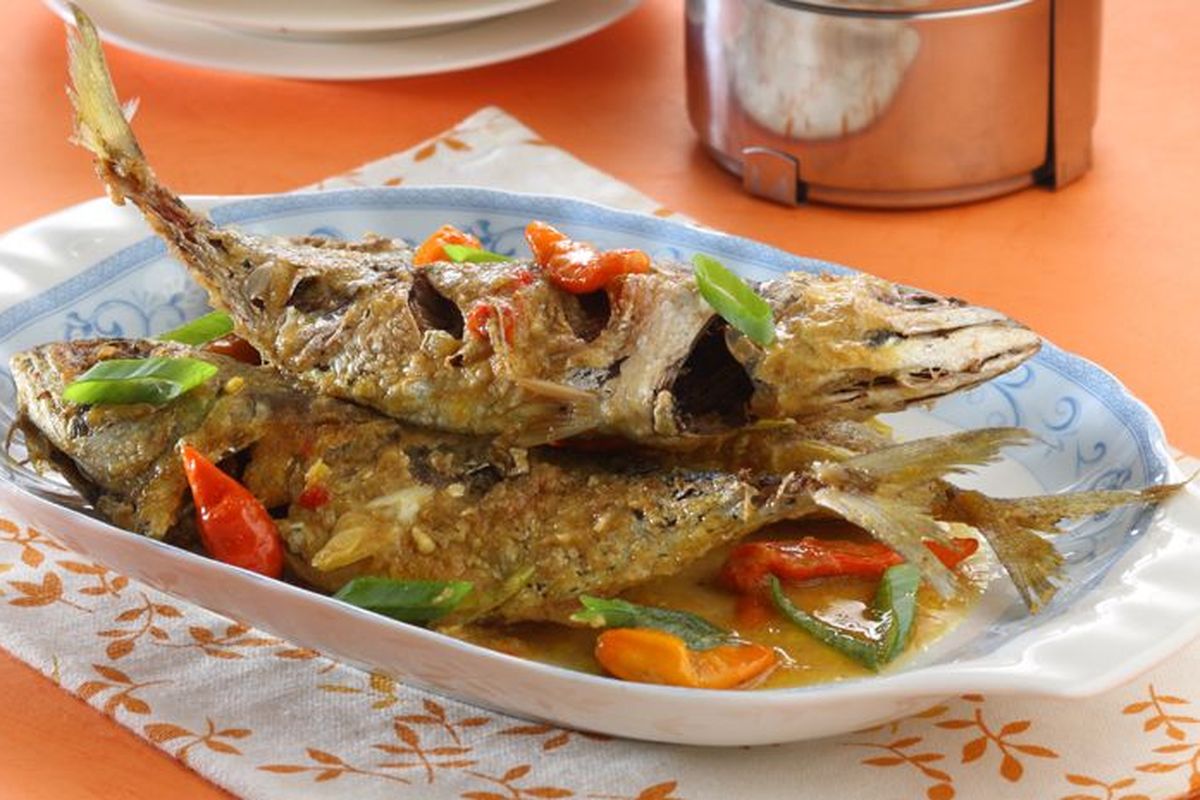Nasi Tutug Oncom is a beloved traditional dish from West Java, Indonesia, particularly popular among the Sundanese people. This unique culinary creation combines steamed rice with oncom, a fermented soybean or peanut cake, resulting in a flavorful and nutritious meal. In this article, we will explore the history, preparation, and cultural significance of Nasi Tutug Oncom, highlighting why it remains a cherished dish in Indonesian cuisine.
The Origins and History of Nasi Tutug Oncom
Contents
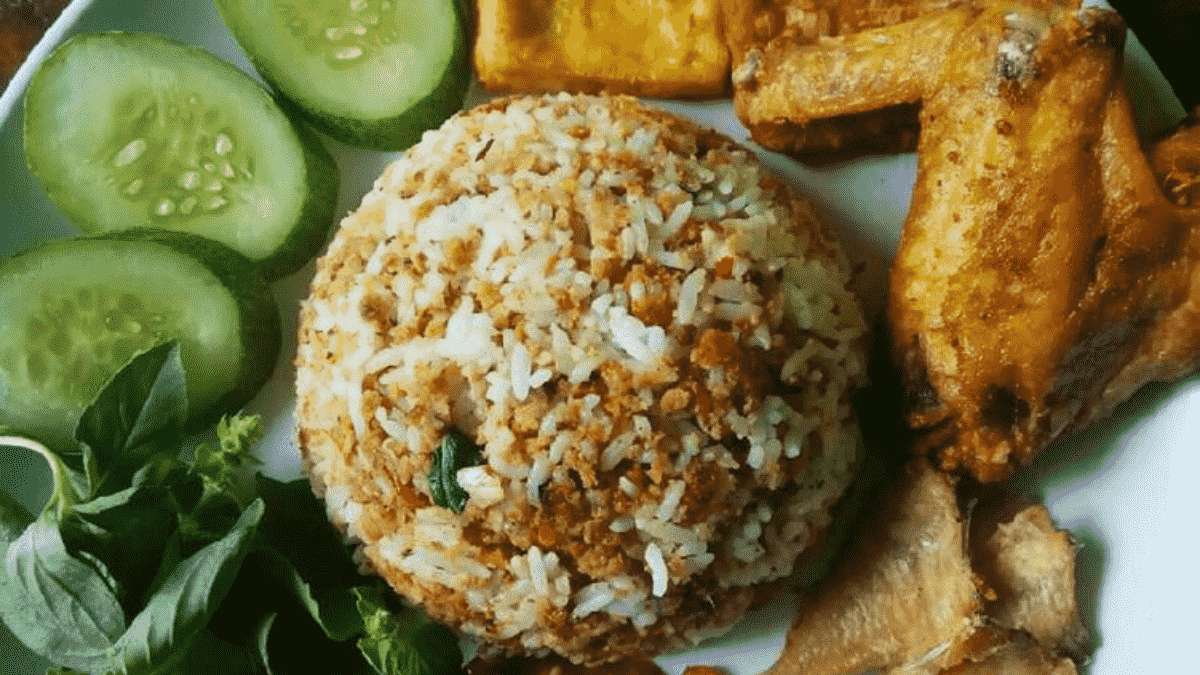
With its deep roots in Sundanese culture, Nasi Tutug Oncom emerged as a gruffer and full-flavored version of Nasi Tutug, replacing the aroma of tempe, warm rice, sweet peppers with blood, meat, and offal. Tutug is to mash or pound togelup, refers to the traditional practice of mashing or pounding the rice mixed with oncom. Oncom is also a mainstream in Sundanese food from West Java and very much adored for its adjusted umami taste and dietetic attributes. Traditionally, oncom is used as a solution for recycling leftovers from the production of tofu and tempeh into a more valuable form of food. Furthermore, Nasi Tutug Oncom was a basic dish from rural families with a sideline of making this only to have better protein intake than only-eating-rice family. Innovator Over the years, it has developed into a popular food where it is enjoyed for its comfort and simplicity. Nowadays, Nasi Tutug Oncom has turned into every level of community, and has been served in Sundanese parents houses to reach Sundanese restaurant.
Ingredients and Preparation
Here are some of the key ingredients used in the making of Nasi Tutug Oncom, each bringing a unique and irreplaceable flavor and texture into the dish. These served with steamed rice, oncom, garlic, shallots, red chilli and usual spices such as kencur (a kind of aromatic ginger) and lemongrass in light fatredient. Every single one of the items in this can contributes to the deep, umami goodness this dish is known for. The process of preparing Nasi Tutug Oncom is first steaming the rice until it is cooked well and soft. In a small saute pan, heat the saute oil minced garlic, shallots and chilli banana until fragrant. Put the crumbled oncom on a pan then stir well with the spices. Stir until the oncom is cooked and slightly crispy Then crush or mash them lightly using a ulu (pestle) until they become a smooth paste. Transfer the seasoned oncom into the steamed rice and mix well to combine everything properly and evenly. It resulted in a wonderful mix of savory, spicy, and fragrant ingredients which combine perfectly, forming Nasi Tutug Oncom.
Nutritional Benefits of Nasi Tutug Oncom
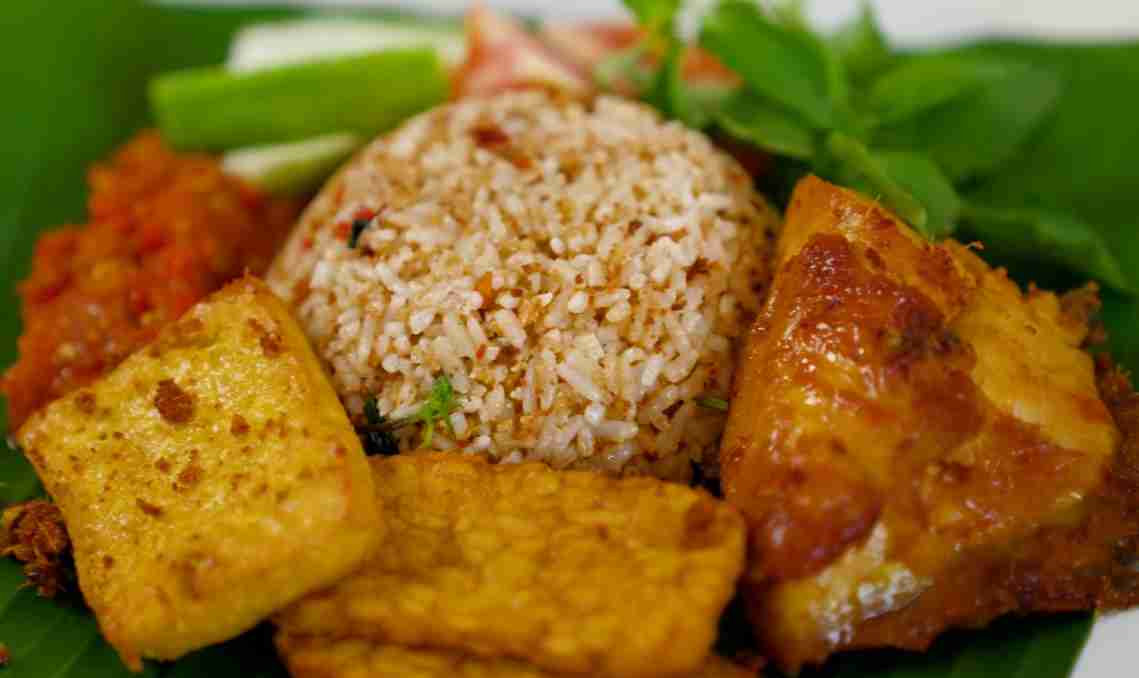
Nasi Tutug Oncom is a very delicious one and well packed with nutritional advantages. Oncom contains high levels of protein, fiber, and essential vitamins and minerals. The fermentation gives this food a nutritional boost which also makes it easier on your digestive system and benefits the gut. Furthermore, oncom contains probiotics which keep the gut healthy. In addition, the union of rice and oncom is a complete meal concept with carbohydrates and proteins. By also including garlic, shallots, and chili peppers, you are including your body with antioxidants, as well as some anti-inflammatory ingredients. Therefore, Nasi Tutug Oncom is a good soul food that will make you feel fully content and satisfied.
Cultural Significance
Nasi Tutug Oncom is an iconic dish of West Javanese and Sundanese people. It is really the ideal peasant food — making the most out of very little and nonetheless you can come up with a dish full of flavors and plenty of nutrition. This is a dish that is very much part of family gatherings, community feasts, and special occasions, representing a coming together and common history. Furthermore, Nasi Tutug Oncom is proof that the culinary tradition of Indonesia is very wealthy. The book presents the extraordinary cooking methods and flavors unique to Sundanese cuisine, and works to ensure the continuation of these culinary legacy of Sundanese for generations to come. To attempt Nasi Tutug Oncom is a way people can reconnect with their own literal and culinary roots — and be proud of Indonesian diverse gastronomy.
Modern Variations and Adaptations
While the classic style of Nasi Tutug Oncom remains adored, different variations have emerged—–proof of the dish’s potential to adapt. To optimize the full flavor of the dish, some chefs will throw in leafy vegetables like spinach, watercress or even bean sprouts to give it a refreshing, healthful kick. You could also mix them with some tempeh, tofu, or even shred some chicken to mang the mash up into a more filling meal. Also, some chefs use other seasonings and spices which reflect the modern preferences. One way you could take this dish to the next level is through the addition of tension, say a little soy sauce, some lime juice, anything to make the dish tick. And these adaptations have just made Nasi Tutug Oncom — which has never wavered from its peasant roots — more palatable to a larger group of market segments.
Serving Suggestions
Nasi Tutug Oncom is usually accompanied by other side dishes and accompaniments that complement the rich flavors. It is generally served as a side meal, with complementary dishes like fried tempe or tofu, sambal (spicy chili paste), and lalapan (fresh vegetable side salad). Sides: The sides provide some texture and color as well as extra flavor to a meal, making dinner a little more complete. Plus, a clear vegetable soup in a bowl could be a good freshener after having those savory rice. Sayur asem, a tangy and slightly sweet tamarind-based soup, is a crowd-pleaser that really helps balance the spiciness of the oncom mixture. More, type of traditional Sundanese beverages such as Es Cendol (Sweetened coconut milk drink with pandan green rice flour jelly) can be ended the main meal.
Cooking Tips and Tricks
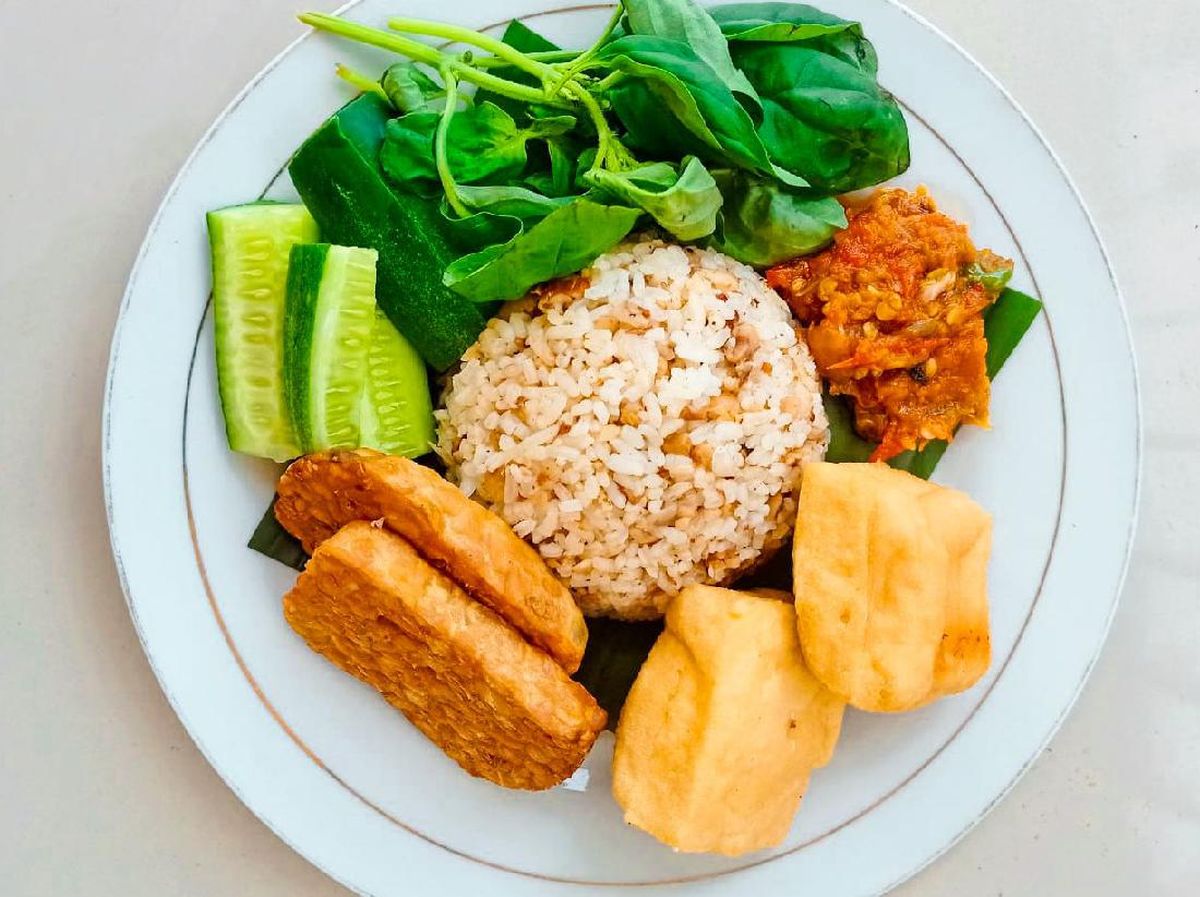
To achieve the best results when preparing Nasi Tutug Oncom, consider the following tips and tricks. First, use freshly steamed rice, as it will better absorb the flavors of the oncom mixture. If using leftover rice, reheat it to restore its moisture and fluffiness.
Second, ensure that the oncom is well-cooked and slightly crispy before mixing it with the rice. This will enhance the texture and flavor of the dish. Additionally, adjust the level of spiciness to suit your preference by varying the amount of chili peppers used in the recipe.
Finally, don’t be afraid to experiment with different vegetables and seasonings. Nasi Tutug Oncom is a versatile dish that can be customized to your taste, making it a perfect canvas for culinary creativity.
Exploring Regional Variations
Nasi Tutug Oncom, while deeply rooted in Sundanese culture, also showcases regional variations across West Java. Each area puts its unique spin on the dish, incorporating local ingredients and techniques. For instance, in the city of Bandung, you might find Nasi Tutug Oncom served with a side of empal (fried marinated beef) and karedok (raw vegetable salad with peanut sauce), adding rich textures and flavors to the meal.
In the more rural areas, the dish may be simpler, focusing on the essential elements of rice and oncom, highlighting the natural flavors of these ingredients. These regional differences not only add diversity to Nasi Tutug Oncom but also reflect the adaptability and creativity of Indonesian culinary traditions.
Also read other interesting articles about Strawberry Milk: A Delicious and Nutritious Delight That Energizes Your Day here

